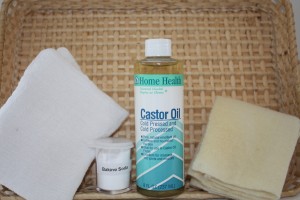Headache remedies are usually treated by taking a pill and waiting for it to work.But do we know the side effects of these pills?
Is there anything more annoying than having a headache? I don’t mean the headaches we have when we don’t want to be bother.
Some of the herbs used in headache remedies include, feverfew, lavender, ginger, cayenne pepper, and peppermint.
Some doctors are becoming more in tune with using non drug methods of relieving headaches. The side effects from most headache drugs can cause more problems in the long run. Always check with your health care professional before trying any headache remedies.
White willow bark was the original ‘aspirin’ before it became chemically produced. White willow bark can be found in capsule forms at your favorite health store. Its main ingredient is salicylic acid which is what works on the pain.
Medowsweet a bitter tasting herb contains methy salicylate which when dried turns into salicylic acid. If using as a tea be sure and cover when brewing as the steam contains the salicylic acid.
Many have used fresh feverfew for migraines and headaches. One leaf eaten once or twice a day on a daily basis may prevent migraines. Be careful, some have reported mouth irritation when using feverfew, start slow.
Feverfew, an anti-inflammatory, dilates the cerebral blood vessels, easing the migraine associated with constricted blood vessels. Feverfew can be found in capsule form.
Another type of headache may be caused by overindulging especially with alcohol and/or sugar. Success has been found in drinking a tea of 1 tsp. alfalfa seed and 1 tsp. orange leaf and steep for five minutes in almost boiling water. Stain and sip for this headache remedy.
Rosemary tea and peppermint tea may help with food-related headaches. Peppermint oil has been used for years. When using peppermint essential oil, mix it with a carrier oil such as almond oil or grape seed oil. The proportion of essential oil should be about 10% essential oil to the carrier oil.
Other types of headache oils include Lavender oil with the same proportion of essential oil to carrier oil. Lavender is a sedative, analgesic with antispasmodic action, cooling bitter remedy useful for migraines and tension headaches.
It is never a good idea to use essential oils straight from the bottle, they can cause burns. Do not take internally unless aided by a health care profession with the knowledge of essential oils.
Tension headache are usually at the back of the neck and travels up the head. Try chamomile flower tea in 1 c. almost boiling apple juice. Steep for 5 minutes and sip.
Other headache remedies:
Relax and use acupressure for headache remedies. Press on the back of the neck at the indention where the neck attaches to the skull. At the same time press gently on the bridge of the nose between the eyes. Press gently and increase pressure if you can tolerate the pressure.
Ginger tea is folk remedy for headaches and a ginger bath may reduce the tension causing the headaches. Another folk remedy is gently rubbing a cut lemon on the affected area, or used well diluted lemon oil with a carrier oil. Only about 5 drops should be mixed in 25 ml of oil.
Cayenne Pepper may help; one way is to smell the spice and another way is to rub capsicum cream on the affect area.
Sometimes laying down with an ice pack on the top of the head or back of the neck with feet elevated above the heart may help, be sure and keep warm by covering with a blanket and adding something warm to the top of the feet such as a heated towel.
Headaches may respond to relaxing and drinking a strong cup of black tea. Some food can cause headaches. Keep a food diary and when a headache occurs take stock of what you had to eat.
Always start slow when trying any herbal headache remedies and take time to smell the roses or maybe the cayenne pepper.

